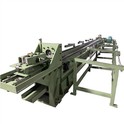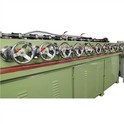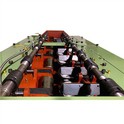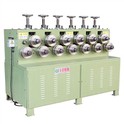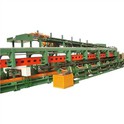Aluminum Alloy
Why Choose Us?
Rich Experience
"FANGRONG" brand established in 1998, we are the leader of straightening machine, drawing machine, and pointing machine in China.
Wide Range of Applications
We have rich experiences in aluminum industry, copper industry, stainless steel industry, titanium alloy industry, magnesium alloy industry, molybdenum alloy industry, lead alloy industry, set.
Reliable Product Quality
Our company has been providing customers with better quality products. Our business is always customer-oriented and focuses on creating customer service experience.
Excellent Customer Service
Our goal is to make professional first-class equipment, first-class service and first-class innovation, and realize product specialization, technology specialization, service specialization and teamwork.
What is Aluminum Alloy?
Aluminum is a metal that can be combined with other elements including copper, magnesium, silicon, zinc, and manganese, to alter its mechanical and physical qualities. These metals are added in specific proportions to achieve the desired properties for a given application. For instance, combining magnesium with aluminum can result in a strong, light alloy ideal for use in the aerospace and automotive industries. Aluminum alloys sees extensive use in many different industries because of their low density, resistance to corrosion, and thermal conductivity. Many different items, including consumer electronics, automobiles, and aircraft, are made from aluminum alloys.
Advantages of Aluminum Alloy
Outstanding Performance in a Lightweight Package
Aluminum alloys are known for their excellent strength-to-weight ratio. This balance is crucial in industries where both strength and weight play significant roles, such as aerospace and automotive. Aluminum’s density is about 2.7 g/cm³, significantly lower than steel, which makes it a preferred choice when reducing weight without compromising strength is essential.
Superior Durability Against the Elements
One of the key advantages of aluminum alloys is their natural resistance to corrosion. Aluminum develops a thin oxide layer that protects it from further oxidation, which makes it highly suitable for applications exposed to harsh environmental conditions. This property is particularly valuable in marine environments and outdoor structures .
Efficiency in Thermal and Electrical Applications
Aluminum alloys have excellent thermal and electrical conductivity. This makes them ideal for applications like heat exchangers and electrical transmission lines, where efficient energy transfer is crucial. Aluminum’s electrical conductivity is about 61% that of copper, making it a cost-effective alternative for power transmission.
Economic and Environmental Considerations
Aluminum is not only abundant but also highly recyclable. The recycling process for aluminum requires only about 5% of the energy needed to produce primary aluminum, which significantly reduces its environmental impact . This makes aluminum an economically and environmentally sustainable choice.
Versatility and Ease of Fabrication
Aluminum alloys offer unmatched versatility. They can be easily cast, machined, and formed into various shapes, catering to a wide range of industrial needs. The flexibility of aluminum allows for creative and complex designs that might be more challenging with other metals .
Types of Aluminum Alloy
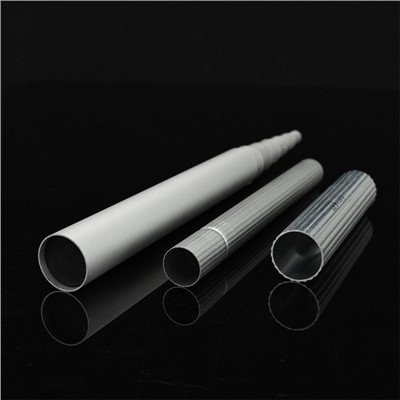



1000 Series (Pure)
Aluminum makes up at least 99% of the 1000-series alloys’ composition, with only traces of other elements. They are very thermally conductive, highly ductile, and corrosion-resistant. Pure aluminum is utilized in products like chemical tanks, conductive bus bars, and rivets. The precise composition and impurity content of the various alloys in the 1000 series is what distinguishes them from one another.
2000 Series (Copper)
Copper serves as the primary alloying element in the 2000 series of aluminum alloys, giving them better strength. These alloys are machinable, can withstand high temperatures, and can be heat treated. Military, aerospace, and other high-performance applications all find them valuable. Copper content and other trace elements vary between different 2000 series alloys.
3000 Series (Manganese)
Manganese is the primary alloying element in aluminum alloys from the 3000 series; it improves the metal’s corrosion resistance and formability. These alloys are not heat-treatable and have moderate strength. They are employed in cookware, automotive parts, and construction materials. They also work well when welding and anodizing.
4000 Series (Silicon)
Silicon, which is the main alloying component in this series, gives aluminum excellent molten fluidity and minimal shrinkage when it solidifies. It has good machinability, moderate strength, and good corrosion resistance. In the automotive industry, it is usually used for engine blocks and other parts that need to dissipate heat efficiently. For more information, see our guide on Silicone.
5000 Series (Magnesium)
The main alloying element in the 5000 series is magnesium. These versions of aluminum find relevance in vehicles, pressurized vessels, and bridges.
6000 Series (Magnesium and Silicon)
The 6000 series alloys contain magnesium and silicon as the main alloying elements. They exhibit good strength, significant resistance to atmospheric corrosion, and are machinable. They are commonly used in structural components within the aerospace, automotive, and construction industries.
7000 Series (Zinc)
Another category of aluminum alloy is the 7000 series. It is a heat-treatable alloy involving zinc with smaller amounts of copper, magnesium, and other elements. It has high strength, good toughness, and excellent fatigue resistance. The alloys are used in aircraft and aerospace applications, as well as in high-performance sporting goods. This type also strongly resists corrosion and can be welded, although care must be taken to avoid cracking.
Application of Aluminum Alloy
Transportation
Aluminum alloys are valuable for their light weight and ability to resist corrosion. They are used in boats and ships as well as engine blocks, body panels, and structural components in the railway, automotive, and marine industries.
Electrical Applications
Aluminum alloys serve as conductors in power transmission lines, electrical wires, and electronic components. The low density is beneficial in power transmission lines since the cable's weight can be a limiting factor. Aluminum alloys are also utilized in electronic devices due to their excellent heat dissipation capabilities and thermal management characteristics. Generally speaking, aluminum alloys can make for affordable, durable, and capable electrical components.
Consumer Goods
Aluminum alloys most often find their way into consumer goods because of their minimal weight and ability to resist corrosion. Automobile parts, cookware, electronics, and beverage cans are just a few of the products that are usually made of aluminum. Durability, strength, and recyclability are advantages of using an aluminum alloy in consumer goods.
Medical Equipment
Aluminum alloy is used in various medical equipment such as wheelchairs, hospital beds, and surgical instruments due to its low density, relative strength, and corrosion resistance. It is also utilized in medical implants like bone plates and screws because it is biocompatible. It’s very often important for a medical device to be both durable and immune to rust and other types of corrosion.
Construction
Aluminum alloys’ inherent qualities make them useful components in windows, doors, roofing, siding, and framing. These alloys are ideal in abrasive outdoor environments because they are strong, lightweight, and resist corrosion. Aluminum alloys can also be easily formed into a variety of shapes and sizes, providing flexibility in design and construction.
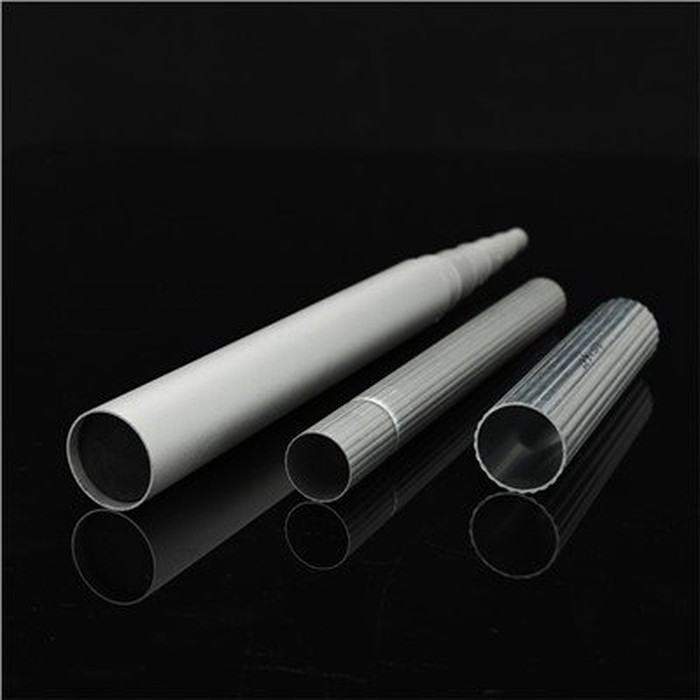
● Copper (Cu): Adding copper to aluminum increases its strength and hardness. An example of aluminum-copper alloy is 2024.
● Zinc (Zn): Aluminum-zinc alloys are known for their strength and corrosion resistance. One common example is 7075
● Magnesium (Mg): Aluminum-magnesium alloys are lightweight and have excellent corrosion resistance. An example of such an alloy is 5083.
● Silicon (Si): Adding silicon to aluminum improves its casting properties and reduces shrinkage during solidification. 4043 aluminum alloy numbers among those that offer such exceptional qualities.
Corrosion Resistance
Aluminum and its alloys are naturally resistant to corrosion because they form a thin oxide layer on their surface. This layer helps prevent corrosion and rust.
Lightweight
Aluminum alloys have a low density. That’s why they’re light. The lightest aluminum alloy is called “aluminum lithium alloy,” which is lightweight and strong at the same time. For this reason, they’re widely used in the aerospace industry.
High Ratio of Strength to Weight
Despite being lightweight, aluminum alloys are stronger and more durable than many other materials of comparable density. This is due to the combination of aluminum with other elements, such as copper or zinc.
Malleable
While aluminum alloys are not as soft or flexible as other materials, they’re easily shaped and formed without breaking or cracking. This makes them a valuable option in construction and manufacturing.
Heat Conductivity
This refers to the ability of aluminum alloys to efficiently transfer heat. The high heat conductivity of aluminum alloys makes them a popular choice for applications or products that require efficient heat dissipation, such as in car radiators, cooking utensils, and electronic devices.
Step 1
The process starts with obtaining raw materials such as bauxite ore and alumina (aluminium oxide). Bauxite ore is mined from various locations worldwide and then processed in an alumina refinery to extract alumina. This alumina is combined with other elements, such as magnesium, copper, or silicon, to create the desired alloy. Each alloy has unique properties that make it suitable for different applications.
Step 2
Next, the raw materials are melted together in a furnace at high temperatures to form molten aluminium alloys. At this point, metal alloys are added to create specific properties desirable for certain products. Once the molten aluminum alloys have been created, they can be poured into molds, which will cool and harden into their final shape.
Step 3
Finally, finishing processes such as machining or welding may be used further to refine the shape and surface of the product before it is ready for use. Various treatments can be applied to aluminium alloys, such as anodizing or painting which can improve corrosion resistance or add color.

What Is the Color of Aluminum Alloy?
The color of aluminum alloy is typically a metallic silver-gray tone. The surface appearance can vary depending on factors such as the alloy composition, surface treatment, and lighting conditions. Aluminum alloys can also be coated or anodized to achieve different colors and finishes, offering a wide range of options for aesthetic purposes. However, in its natural state, the aluminium alloy exhibits a characteristic silver-gray color.
Aluminum alloys have been in use for over a century, with their development and application dating back to the late 19th century. The first significant breakthrough in aluminium alloy technology occurred in 1886 with the invention of the Hall-Héroult process, which made the large-scale production of aluminum possible. This development paved the way for further advancements in aluminum alloy research and engineering. In the early 20th century, alloys such as Duralumin gained prominence and found extensive use in the aviation industry, particularly during World War I. Since then, the understanding and utilization of aluminum alloys have continued to progress, leading to the development of a wide range of alloys with improved properties and performance. Today, aluminum alloys are widely employed in various industries, including aerospace, automotive, construction, and manufacturing, due to their desirable combination of lightweight, strength, corrosion resistance, and formability.
How to Choose the Right Aluminium Alloy
The first step in selecting the right aluminum alloy is understanding the strength requirements of your project. Aluminum alloys come in various strength levels, from soft and malleable to high-strength options suitable for structural applications. Consider factors such as load-bearing capacity and stress resistance to identify the appropriate strength category.
Corrosion resistance is a critical factor, especially for applications exposed to harsh environments or moisture. Aluminum alloys with enhanced corrosion resistance, such as 5xxx series alloys with a magnesium content, are ideal for marine and outdoor applications. In contrast, 6xxx series alloys offer good general corrosion resistance and are commonly used in architectural and structural projects.
For projects subjected to high temperatures, it’s essential to select an aluminum alloy with adequate heat resistance. 2xxx and 7xxx series alloys are known for their excellent heat resistance properties. These alloys are often employed in aerospace and automotive applications where exposure to elevated temperatures is common.
The ease of forming and welding aluminum varies between alloys. Some alloys are highly formable and weldable, making them suitable for intricate shapes and joints, while others may require more advanced techniques. Be sure to choose an alloy that aligns with your project’s fabrication methods.
While performance characteristics are paramount, it’s also essential to consider the cost and availability of your chosen aluminum alloy. Some specialized alloys may come at a premium price, and their availability may be limited. Weigh these factors against the performance requirements of your project to make an informed decision.
How To Identify Aluminum Alloy Grades?
Generally, you can identify an aluminum alloy using a 4-digit identification model. Each digit on the aluminum grades chart represents a different aspect of the alloyed metal and is commonly written before the pure metallic element for clarity’s sake. For example, 5052 Aluminum.
The digits represent separate entities like steel alloy, titanium alloy, or other alloys. Here is a breakdown of the main alloying element each first digit represents:
“1” means the absence of alloyed elements and that it is pure aluminum
“2” represents Copper
“5” represents Magnesium
“6” represents Magnesium and Silicon
“7” represents Zinc
“8” is booked for all other alloying agents
You should note that these numbers can identify the whole aluminum alloy list. For instance, given that “2” denotes Copper, all aluminum copper alloys will be referred to as “2xxx series”.
Further, the second digit signifies any unique alloying conditions and if the alloy has been altered from its original state. However, the digit remains “0” if no special modifications exist. As for the third and fourth digits, they are typically used to serialize and distinguish individual alloys.
A 1xxx series (a pure aluminum consisting of precisely 99% aluminum) while the last two digits denote the minimum aluminum percentage above 99%. For instance, 1060 aluminum contains at least 99.60% pure aluminum.
What Are the Chemical Properties of Aluminum Alloy?
|
Aluminum Alloy Type |
Composition |
Corrosion Resistance |
Weldability |
Machinability |
Anodizing Response |
|
1100 |
99.95% Al, 0.05–0.20% Cu, Iron: 0.95% max. |
Good |
Good |
Good |
Poor |
|
2024 |
93.50% Al, 4.3–4.5% Cu, 0.5–0.6% Mn, 1.3–1.5% Mg |
Poor |
Poor |
Good |
Poor |
|
3003 |
98.60% Al, 1.20% Mn, 0.12 Cu |
Good |
Good |
Good |
Poor |
|
5052 |
97.25% Al, 2.50% Mg, 0.25% Cr |
Good |
Good |
Poor |
Good |
|
6061 |
97.90% Al, 0.60% Si, 1.0% Mg, 0.2% Cr, 0.28% Cu |
Good |
Good |
Good |
Good |
|
7075 |
90.00% Al, 5.60% Zn, 2.50% Mg, 1.60% Cu |
Poor |
Poor |
Fair |
Good |
Our Factory
Dongguan Fangrong Precision Machinery Industry Co., Ltd., established in 1999, is a professional manufacturer of wire drawing machines, straightening machines, wire rolling machines and other equipment. The company is a professional manufacturer integrating development, production and sales, Our goal is to make professional first-class equipment, first-class service and first-class innovation, and realize product specialization, technology specialization, service specialization and teamwork.
Ultimate FAQ Guide to Aluminum Alloy
We're well-known as one of the leading aluminum alloy manufacturers and suppliers in China. Please rest assured to buy discount aluminum alloy for sale here and get quotation from our factory. For customized service, contact us now.
1 5 od aluminum tube, aluminum rectangular tube, 2 aluminum pipe
